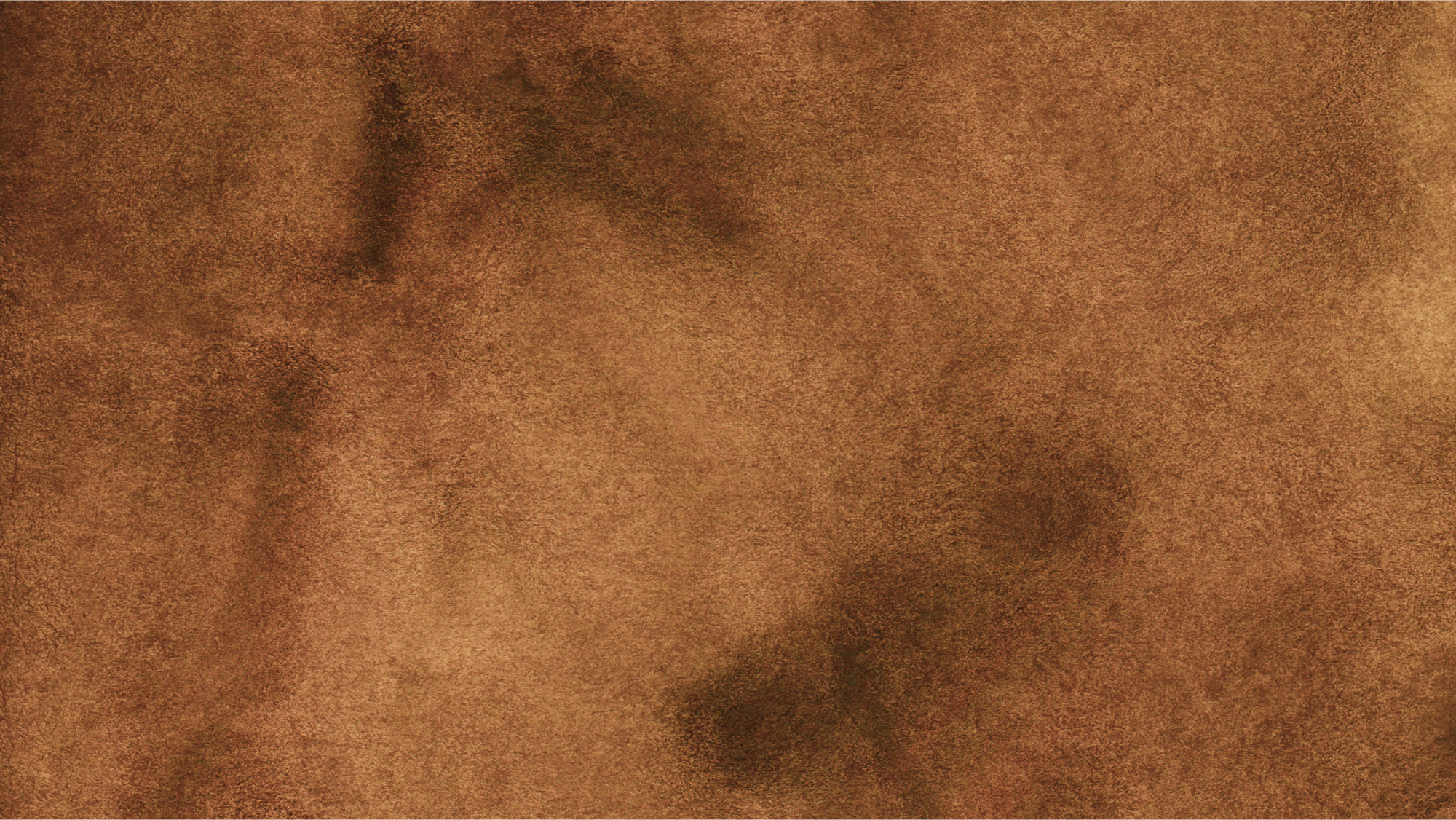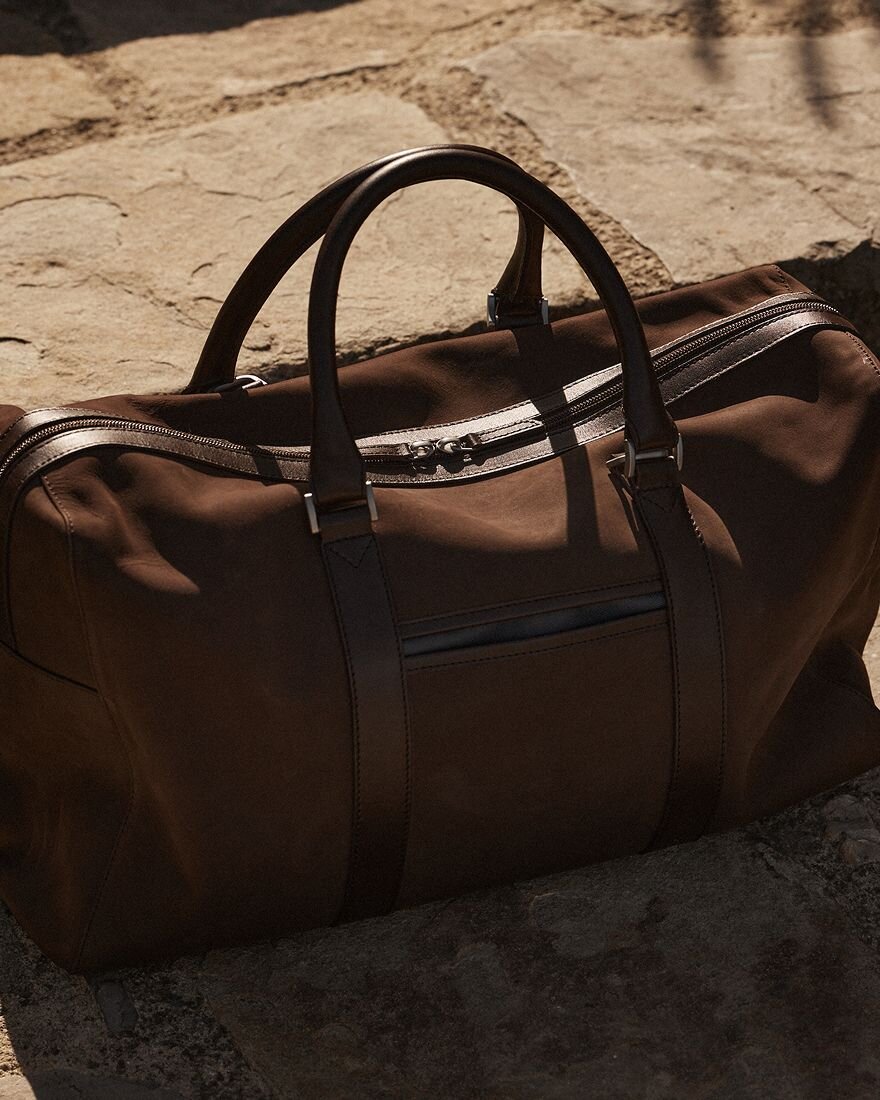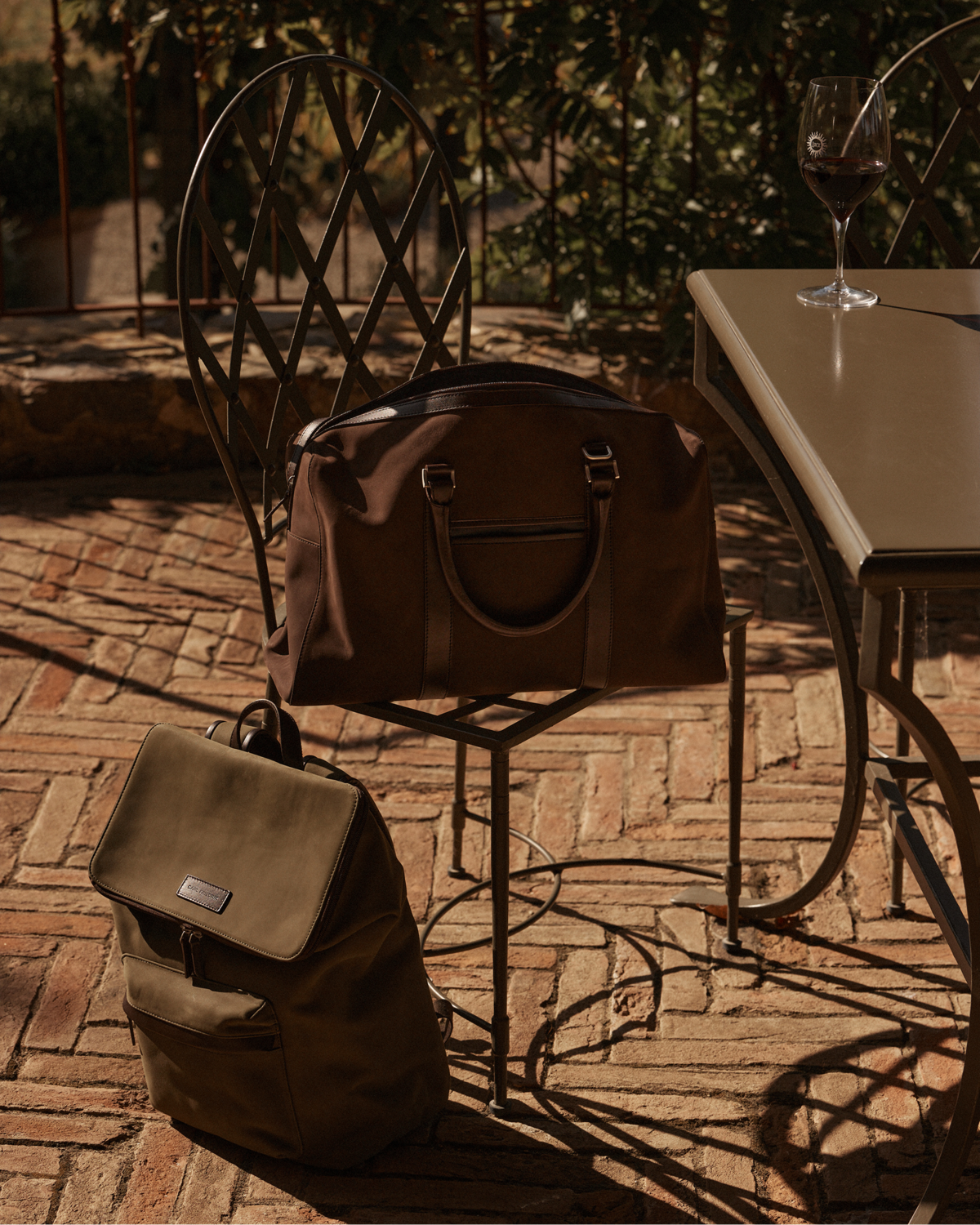From Presley’s blue shoes to Seinfeld’s overpriced jacket, this soft, fuzzy fabric has become a pop culture phenomenon for its plush touch and elegant aesthetic.
In this comprehensive ode to suede, we’ll first examine how the fabric is made, then cover suede types, uses, maintenance, faux suede and environmental considerations. We’ll also provide a suede vs. nubuck comparison.
Contents
What is suede?
What is suede made of?
Pros and cons of genuine suede leather
How is suede made? A step-by-step tannery process
Types of suede: Genuine & synthetic
Nubuck vs. Suede: Key Differences Explained
Uses of suede leather in fashion, footwear & luggage
Care & cleaning: How to protect suede
What is faux suede?
Sustainability & environmental impact of suede
Suede leather unwrapped: Key takeaways
What is suede?
While rigid leather types like full-grain come from the top side of the hide, suede is from the inner layer of skin, also known as the ‘corium’, ‘underside’ or ‘split layer’. This delicate, pliable layer lets tanners give suede its trademark napped finish.
‘Napped’ refers to a fluffy, velvet-like texture on fabric. Tanners achieve this finish by sanding the surface to uproot tiny natural fibres. Other napped fabrics include velvet, velour, corduroy and fleece.
In the 19th century, napped leather gloves from Sweden became popular among upper-class European women for their luxurious texture. The word ‘suede’ stems from the French name gants de Suède (Swedish gloves).
What is suede made of?
Rugged leathers are often made from cowhide. Suede leather, on the other hand, most commonly comes from lamb, though other sources include goat, deer and sometimes calf.
But the main difference lies in the layer. Top grain leather features densely packed fibres that create a tough, smooth and impermeable surface. This rugged, waterproof shell evolved naturally to protect livestock from the elements.
The underside, however, isn’t exposed to the outside world. Thus, it’s softer and more pliable, which lets leatherworkers sand a fluffy nap. This elevated nap alters how suede reflects light, changing its colour when brushed in different directions.
Faux suede is a synthetic alternative. Although it doesn’t look or feel like the authentic option, faux suede can be more durable and affordable.
Pros and cons of genuine suede leather
Suede has been a sought-after fabric since fashionistas began donning gants de Suède in the 19th century. The soft, velvety nap is a pleasure to touch, making it ideal for skin-facing accessories like gloves, jacket linings and upholstery.
Light and breathable with great insulation, suede is comfortable in hot and cold climates. Its natural porousness makes dying the fabric easy, unlocking a broad gamut of possible colours.
On the downside, suede is expensive and delicate — even minor stains can leave hard-to-remove marks. Suede also isn’t very durable. The fabric tends to rip easily and will wear out with heavy use.
The ultra-absorbent fabric can also soak up water, potentially causing major discolouration and shrinkage.
| Pros | Cons |
|---|---|
| Looks luxurious | Prone to water damage and staining |
| Ideal texture for skin-facing apparel and accessories | Can rip or wear out with regular use |
| Suitable for hot and cold weather | Expensive |
| Available in a wide range of colours | Hard to clean |
How is suede made? A step-by-step tannery process
We know this napped fabric looks and feels sublime. But how is suede made? Here’s a brief rundown of the tanning process.
Acquisition
The tanner procures animal hides. Lamb hide is the go-to option, although deer, goat and calf offer viable alternatives.
Curing
The hide is curved to prevent biodegradation by applying salt and leaving it to air dry.
Washing
A salty, dried-out hide is tricky to work with. Once it arrives at the tannery, the tanner washes off the salt and soaks the hide in water. This rehydrating procedure prepares the suede leather hide for further processing.
Liming
The hide is soaked in calcium hydroxide (slaked lime) to remove excess hair and flesh. Liming also helps soften the hide, making it easier to split the inner layer.
Splitting
The tanner cuts the softened hide into layers with a splitting machine. This custom-built contraption has circular blades that, when operated by skilled hands, can precisely divide the hide into thin slices. Tanners keep the upper layer for full-grain leather, while the lower side is usually reserved for suede.
Napping
While some fabrics like wool have a natural nap, suede gets its soft leather texture from an artificial sanding process (AKA napping). The tanner mechanically sands and buffs the split layer to raise the nap, elevating the tiny fibres that give suede its distinct texture.
Dyeing
Undyed suede has a natural grey or light brown colour. Although visually appealing for some accessories, these neutral hues aren’t always ideal. Tanners use aniline dyes to achieve the desired colour, an easy job thanks to suede’s highly porous nature.
Finishing
Once the dye has dried, the tanner brushes the nap to create a smooth, uniform aesthetic. Some apply a protective coating to safeguard the delicate surface.
Types of suede: Genuine & synthetic
Should you call a suede a suede? Terrible puns aside, not all suede is the same. This premium fabric comes in various types, both organic and synthetic.
Genuine suede
- Animal origin suede: Another name for genuine suede leather (from the hide of a real animal)
- Split suede: Delicate fabric made by splitting the softer underside of the hide. Great for gloves, inner linings, trimmings and upholstery
- Full-grain suede: A rare, durable alternative that uses the entire hide, leaving the tougher top-grain intact. Good for outerwear like jackets
- Cowhide suede: More durable than other suede types, but has a rough, less luxurious texture. Suitable for jackets and footwear
- Sheepskin suede: A soft, lightweight option with a fine nap. Common in delicate high-end accessories like gloves
- Pigskin suede: A coarse but durable suede leather mainly used in shoes and sporting goods
- Goatskin suede: A strong, smooth option with a soft, even texture. Often used in luxury accessories like purses and belts
Faux suedes & alternatives
- Microsuede (microfibre suede): A synthetic fabric made from woven microfibres (often polyester) that is soft, affordable and stain-resistant
- Ultrasuede: A premium blend of polyester and polyurethane with a realistic texture that looks nice in apparel and automotive interiors
- Sueded cotton: A breathable cotton fabric brushed and sanded to achieve a napped, suede-like finish
- Sueded silk: A lightweight, natural silk fabric with a soft, matte surface that feels somewhat similar to suede
Nubuck vs. Suede: Key Differences Explained
Nubuck is a soft luxury leather with a velvety, suede-like texture due to an ultra-fine nap. While suede comes from the softer underside of the hide, nubuck is made from the tougher top grain. The tanner gives this rigid upper layer a rigorous sanding to make it (almost) as soft as suede.
Traditionally, tanners made nubuck from deer and elk. However, calf hide has become increasingly common for its softness and widespread availability.
Nubuck is pricier than suede because it's made from the more expensive and durable upper layer. This added toughness is perfect for footwear like Timberland’s iconic nubuck boots.
Nubuck’s impermeable surface improves spill resistance, simplifies cleaning and mitigates water damage. You can trudge through a puddle in Timberland boots, but don’t even think about wetting those blue suede shoes.
On the downside, this rigid top-grain leather is tricky to shape. Suede’s pliable nature lets skilled leatherworkers craft intricate items like gloves and inner linings. Stiff nubuck, however, is only appropriate for bulky items like boots, backpacks and jackets. While it's susceptible to scratches, nubuck won’t rip or wear out as quickly as suede.
| Nubuck | Suede | |
|---|---|---|
| Origin | Outer layer of deer, elk or calf hide | Underside of lamb, goat or deer hide |
| Texture | Shorter nap, less luxurious than suede | Longer, plusher nap |
| Durability | More durable, but prone to scratches | Susceptible to wear and tear, but less likely to scratch |
| Water resistance | Only damaged by excessive water exposure | Highly vulnerable to water damage |
| Stain resistance | Resists stains well and is easy to clean | Stains easily and is hard to clean |
| Flexibility | Rigid, thus only suitable for bulky items | Flexible, thus better for intricate items |
| Cost | More expensive | More affordable |
| Typical usage | Heavy-duty boots, bags and outerwear | Soft gloves, jacket linings and upholstery |
For a more comprehensive comparison, see our post on nubuck vs. suede.
Uses of suede leather in fashion, footwear & luggage
Famed for its fragility, suede sits firmly in the form-over-function camp. Therefore, many designers use it as a lining or trimming to avoid exposing this delicate textile to the elements.
Suede leather trimmings reside in high-end footwear (loafers, trainers, heels, flats, Chelsea boots, etc.) and accessories like handbags, backpacks, belts and wallets. Soft suede leather linings add a touch of luxury to jackets (blazers and bombers) as well as pants and shirts.
Suede is a classic glove lining due to its soft texture and is common in upscale headgear, such as fedora hats and berets. Thanks to its potent insulation, suede is ubiquitous in high-end winter collections.
We craft backpacks and weekenders from nubuck instead to create a durable, hard-wearing product with a similar napped aesthetic. See our sophisticated nubuck leather range, or check out the complete collection for a broad selection of refined, high-end bags.
Care & cleaning: How to protect suede
Although its porousness makes the fabric famously fragile, a little TLC goes a long way towards safeguarding suede.
- Apply a protective barrier: Take the fabric into a well-ventilated area and brush off any lint or dust. Spray a thin mist of commercial suede protector over the entire garment, including under the arms and pocket flaps. Reapply annually.
- Avoid moisture: Even with a fresh protective barrier, it’s best not to get suede leather wet. Leave your jacket at home when rain is forecast, and hop in a taxi should storm clouds suddenly brew.
- Dry naturally: Cautious suede-wearers can still get caught in an unexpected downpour. If you’ve let your suede blazer get wet, air dry it at room temperature (away from radiators and sunlight) to prevent shrinkage. Stuff the sleeves with newspaper and use coat hangers to help retain its shape.
- Smart storage: Stash your suede in a cool, dark place away from direct sunlight, using coat hangers to stop jackets and pants from distorting. Opt for a breathable garment cover (cotton or linen) rather than plastic, which traps moisture and breeds mould.
- Regular brushing: Frequently brush the fine, fluffy fibres with a silicone-bristle suede brush to remove dirt and maintain its velvety texture. Don’t use abrasive brushes as they can scratch or tear the fabric. Stroke softly in the same direction as the nap for a clean, uniform result.
- Tackle stains: Immediately blot mud or salt stains with a clean handkerchief or microfibre cloth; never scrub or rub. For oily stains, apply cornstarch, talcum powder, or terre de Sommières overnight to absorb the grease. Next, use a commercial-grade suede cleaner to lift stubborn discolourations without damaging the leather.
- Get professional help: Suede is notoriously difficult to clean. A professional garment cleaner may have the products and expertise to erase that nasty stain.
What is faux suede?
Also known as microsuede or microfibre suede, faux suede is a cheaper, more rugged alternative to the real thing.
Manufacturers make microsuede by weaving synthetics (polyester or acrylic) together to form a tight fabric. Next, a polyurethane binder bonds the microfibres onto the fabric base. Finally, the fluffy suede-like texture is achieved through vigorous napping.
Faux suede is more stain-resistant and easier to clean. But like other low-cost synthetics, it doesn’t look or feel as good.
From upholstery to accessories and apparel, designers use this cost-effective alternative in many of the same products. However, its durability makes faux suede more suitable for outerwear like jackets and dresses, as well as curtains and throw pillows.
| Real suede | Faux suede | |
|---|---|---|
| Material | Underside of an animal hide | Synthetic fibres like polyester or acrylic |
| Texture & appearance | Soft, natural nap with subtle variations | Consistent, artificial-looking texture |
| Durability | Highly susceptible to water damage and stains | Durable, water-resistant and easy to clean |
| Breathability & insulation | Breathable and good insulation | Less breathable and insulating |
| Cost | More expensive | Less expensive |
| Ethics | Not vegan-friendly | Vegan-friendly |
Sustainability & environmental impact of suede
Is suede leather sustainable? Or does it have a profound environmental impact? The answer lies somewhere in between.
European tanners can only legally acquire hides that are by-products of the meat and dairy industry. Therefore, when buying leather goods from local brands, no additional CO₂-producing animals will have been raised, thus no extra agricultural emissions. Leather manufactured abroad may not be subject to such conditions.
In less developed nations, tanning can contaminate waterways with heavy metals and toxic chemicals; strict European regulations mitigate these issues. Some manufacturers adopt eco-friendly Leather Working Group (LWG)-certified vegetable tanning practices. Plus, suede and other genuine leathers last when properly cared for and are biodegradable.
However, faux suede has skeletons in the eco-closet, too. Synthetic fibres come from non-renewable fossil fuels and create microplastic pollution with every wash. Manufacturers use a monumental amount of energy to bond microfibres, and the low price tag prompts consumers to throw faux suede away, a la fast fashion. Once in a landfill, synthetic fibres won’t biodegrade for hundreds of years.
So what can an eco-conscious leather-lover do? Look for genuine European leather, ideally with a reputable, environmentally-aware brand with certifications from the Leather Working Group.
Suede leather unwrapped: Key takeaways
Sourced from the soft underside of the hide, suede is an upmarket leather with a plush texture and aesthetic. But the fabric is famously fragile, so follow our advice to take extra good care of those swanky blue suede shoes.
Is suede a type of leather?
Suede is a type of leather that comes from the underside of an animal's hide.
Is suede real leather?
Suede is genuine leather sourced from the hide of an animal, usually a calf. Faux suede, however, is a synthetic alternative made from polyester fibres.
Is suede leather waterproof?
Exposure to water can cause suede to shrink or stain. A commercial suede protector spray can help prevent damage to a degree.
How long does it take for suede to dry?
Depending on the climate, suede leather takes about 24 hours to air dry. Don’t try to speed up the process by putting it in direct sunlight or near a radiator.
How to get water out of suede?
To remove a water stain from suede, blot the water with a dry microfibre cloth, allow the suede leather to air dry, then gently stroke a soft-thistled suede brush in the direction of the nap. Use a suede eraser if required.
The latest product news and travel guides? It's just a sign-up away.



